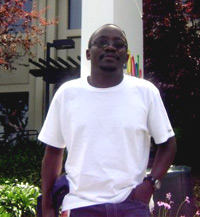 This guest post was written by Robert Ndlovu, an ICT consultant based in San Jose, California, USA. It is the final installment in a series of posts about rural telecommunication solutions. The first and second posts can be found here and here. Ndlovu can be contacted on Ndlovu @ ymail.com and numbers (650) 200 0250, CA, USA. A pdf of all the 3 posts combined can be downloaded here.
This guest post was written by Robert Ndlovu, an ICT consultant based in San Jose, California, USA. It is the final installment in a series of posts about rural telecommunication solutions. The first and second posts can be found here and here. Ndlovu can be contacted on Ndlovu @ ymail.com and numbers (650) 200 0250, CA, USA. A pdf of all the 3 posts combined can be downloaded here.
Telecom Center (Phone & Internet Center)
Think of a telecom center as a setup with phone, e-mail and internet services. This model is pretty common in urban setups. And this model could be used for remote centers and even some urban centers whose electricity supply is more often off than on.
As such the telecom center will have 3 distinct elements: phone center, internet center and the control system.
This test system is for 8 phones and 8 workstations.
Phone Center
The essential building blocks for the rural phone center would be based along these guidelines:
- Housing booths – to house telephone handsets.
- Solar module – this is a 3m long pole with a solar panel, a charger and batteries.
- Wireless module – this could be CDMA or WiFi or GSM depending on what wireless technology is available.
- Phone devices – these are the handsets that will be plugged into the switch on the local network.
- Metering units – these could either be stand–alone devices or incorporated within the telephony devices to regulate usage.
Internet Center
The following make up the data side of the community communications center:
- Mini PCs – these are fully functional computer systems that consume less. electricity but provide enough processor speed and capacity to be used for tasks like word processing and internet browsing and printing.
- LCD monitors – these have a lower power consumption rates.
- Switch – this is in the form of a PoE (Power over Ethernet) switch in which the phones can be plugged in directly with no separate power source as they are powered inline by the switch.
- Accessories – ethernet cables and power strips.
- Software – free tried and tested linux operating system like Ubuntu.
Control System
Basically this is the logical term for the systems that bring and or enable services to the end user stations namely the telephone center and the internet center.
- Internet server – this is a Pentium 4 computer with at least 2G of memory running FREE open source Ubuntu Linux operating system. In short this system acts as the intermediary between the end users (stations) on one side and the internet and satellite dish on the other hand.
- Telephony server – this is the call routing and call processing system that literally performs call origination and termination and all transcoding functions where audio signals have to be converted for GSM or landline systems. Typically this system is a dual core Pentium 4 kicking on at least 3 G memory.
- VSAT system – this is a solar powered satellite dish maybe 1.2m wide with 1.5Mb/s down and 384 kps up and again its size is determined by the size of the center. The VSAT option is the wireless option if there is no GSM or WiMax alternative in that area.
I know someone out there is about to point out that the bandwidth requirements for both voice and data might not be enough. Well, VSAT and VoIP technologies have leap frogged with time. Five years ago when I started thinking of this project Facebook was not so popular then. But today it’s a different story. My point is that what you know NOT today could be a hit tomorrow. Present satellite systems do carry voice at lower bandwidth capacities than ever imagined possible – yes at 4kb/s. GSM uses 13 kb/s.
The beauty of IP telephony is that modern and efficient and cost effective voice compression schemes are now available that enable a number of voice calls to be squeezed into a smaller pipe than before – an interesting analogy would be like packing 20 people into a Kombi originally designed to seat 12 people.
VSAT systems have an option for CIR (Committed Information Rate) which literally guarantees a minimum bandwidth allocation for the end user – the community center. Of course CIR means a little bit extra dollars.
- Solar system – this is an array of solar panels, chargers and batteries that are installed and sized according to the expected load of the deployment. This is measured in KWh (kilo watt hours). This depends on the sunlight and on the size of the panel’s surface area. Batteries are sized in such a way that the system can function even during days of low sunlight; in which case wind energy can be used by use of windmills in areas with low light. Usually areas that have low sunshine and more cloud cover will have higher wind speeds to make sense of considering windmills.
Use of VoIP
If the system described is deployed, then to make calls some telephoning system must be used. NOT Econet, NOT TelOne but some technology that allows you to carry voice over an IP network – VoIP – Voice Over Internet Protocol.
This is how it is setup. Lets say we want to have 4 telephones in our remote site in Gokwe to enable farmers to sell their cotton online and be able to make and receive calls locally and internationally. 4 VoIP devices are installed to provide the dialing tone on site. The actual phones won’t need any electricity as they are powered inline by the network switch. The devices will get their dial tone from the telephone server located locally on the same local area network. But the local switch is linked to other switches nationwide over IP and can communicate with the larger providers like Econet and NetOne. This is using the VSAT option where the GSM is unavailable.
But for other settings a WiMax backhaul is used to connect directly to Econet. This could either use LOS (Line of Sight) or NLOS (Non Line of Sight) to propagate the signals. LOS refers to a direct point to point line between a transmitter and a receiver with NO obstruction in between such as trees, mountains or buildings. WiMax which is another wireless technology has the capability of good connectivity for up to 50 km.
Calls made within the VoIP network from one farmer in Gokwe to another one in Wedza are almost free. Because the phone call path does NOT leave the private network based on open standard and open source technologies. Naturally established telecom operators do NOT like open source based VoIP when used by potential competitors BUT they themselves use the same technology to lower their origination and termination costs which they don’t pass to the consumer.
Cost
The project management teams is more interested in this one. The costs obviously includes all of the above plus labor, security installations, transport, meals, air time etc. Nothing is new here. But of importance to note are the monthly recurring costs that should be built into the budget when this is planned.
- Connectivity – if the VSAT is used then there is a monthly service fee that goes with use of the service. This depends on the amount of traffic that traverses the network.
- Telephony – calls made between similar systems on the IP network are free, but not really free since their connectivity portion takes care of it. Ok let me break it down to simpler terms. If a system community communications is deployed in Jambezi, Gokwe, Wedza, Guruve and Madlambuzi for argument’s sake, calls made between these centers are technically FREE. And now calls made to other networks like Econet, NetOne or TelOne are charged at whatever cost the service providers would have agreed to charge RURAL originated calls.
- Electricity – FREE. Not really the recurring costs here will be for the service technician to do rounds making sure batteries are charging ok. But there is nothing to fix on the panels. Sunrays do not break or get damaged!
- Wages – naturally there would be at least 2 people manning the center: one to assist and the other for security purposes. The if’s and how’s have to be worked out by the ICT in liason with the community – that’s out of my scope.
- Software – no license fees are paid as these systems use open source software.
Other – literally other costs that could have been over looked.
ROI
It would be very essential to look at the return of investment for such a project from a developmental point of view and not a monetary one. The extent to which this digital initiative will enhance and improve people’s lives, has no monetary value that can be attached to it – literally.
With say 100 public users of the communications center that include teachers, A2 farmers, policeman, nurses, local government and villagers etc a fee of $7 per person per month could recoup a big chunk of the running costs after the first year when usage is high and appreciated.
The funds are available, according to POTRAZ, so it makes sense that for the first 12 months running costs are built into the budget in advance. AND when local people appreciate the strength and power of ICT they won’t hesitate to pay some $7 per month to access phone, email and internet services!
Way forward
Considering that the most challenging part of such an huge project – funding is presumably available under control, according to POTRAZ and the Ministry of ICT, what remains is precise project planning to match bring the right technology at a reasonable cost to the targeted population.
This entails doing some pilot runs at a small scale for proof of concept. Since the ultimate plan is to mass deploy these community communications centers, it makes logical sense to solidly conduct thorough pilot runs before committing millions to buying equipment for mass deployment.
Closing remarks
Successful implementation will require a coordinated approach involving close and ongoing partnerships between communities, government and industry providers.
Government – through legislative and statutory instruments. POTRAZ for example allocates the scarce resources to areas that have been identified for deployment, with the ministry coming in to actually put together a deployment plan from beginning to end. And not forgetting to ensure that the national fiber backbone construction to connect to the undersea cables in the Indian Ocean goes to completion. This is nationally important if the country is to have fast access to the Internet beyond our borders.
Communities – it is critical to involve the communities who are targeted for rural communications deployments via the existing community structures. This helps in short term assimilation of the technology and long term ownership of the systems.
Industry – these include service operators who will provide the technology and equipment and other players who will supply different products and services including experts in different technologies referenced in this article.
Media – both print and electronic news providers play a very crucial role in reporting progress or lack of it in any of these deployments.
Naturally a varied version of this plan should be adopted for the urban population to avail internet access. Like using “Tower Lights” in high density suburbs as base stations for WiMax and WiFi – about that in my next article.
Contributions for requests for info, omissions and additions most welcome.
A pdf of all the 3 posts combined can be downloaded here.













Comments
One response
Looks like GSM termination. You just not being direct!